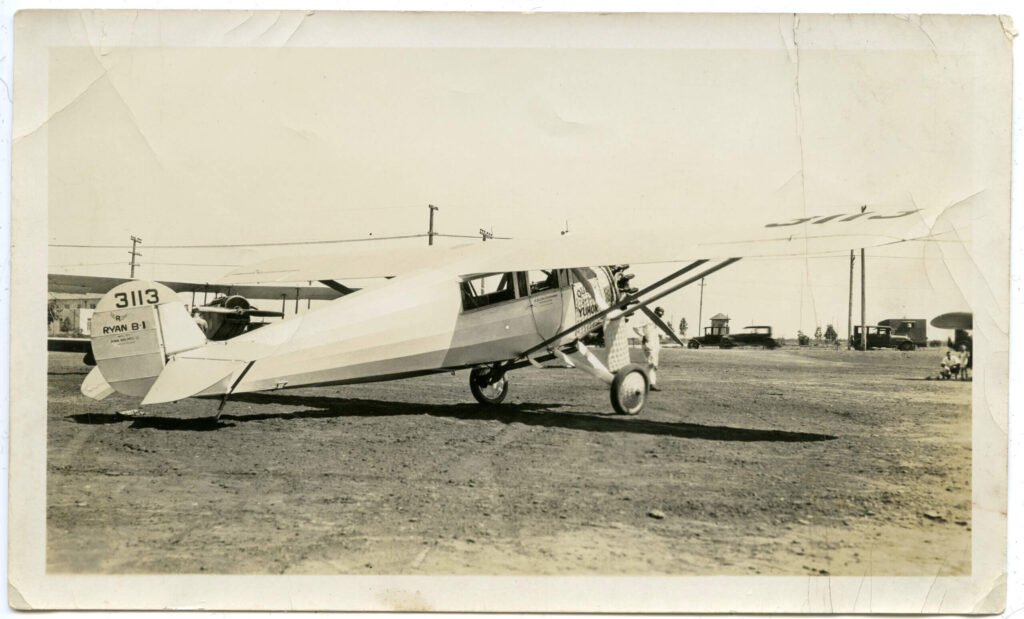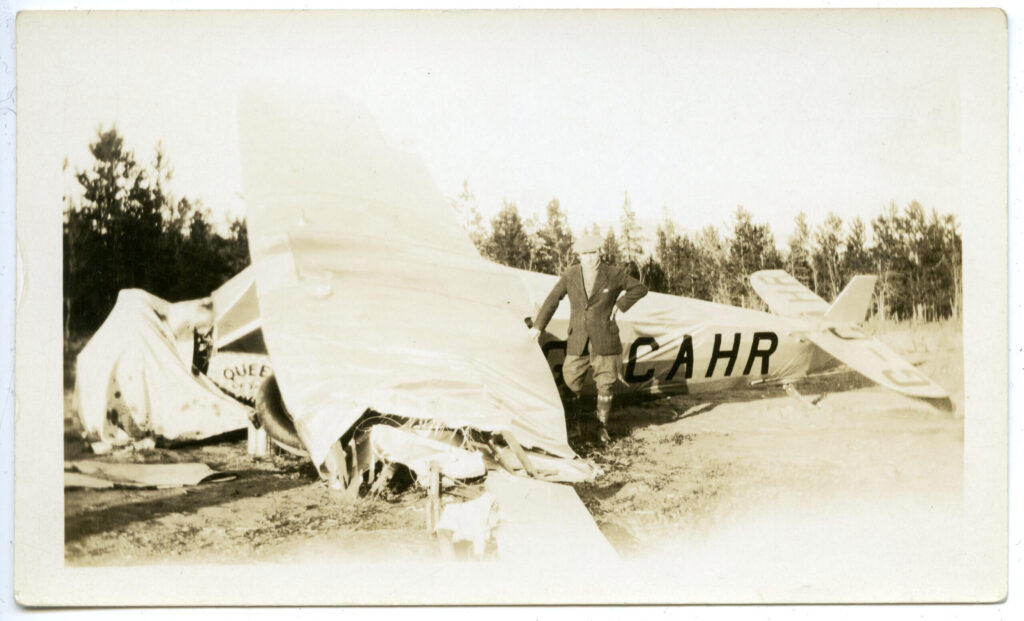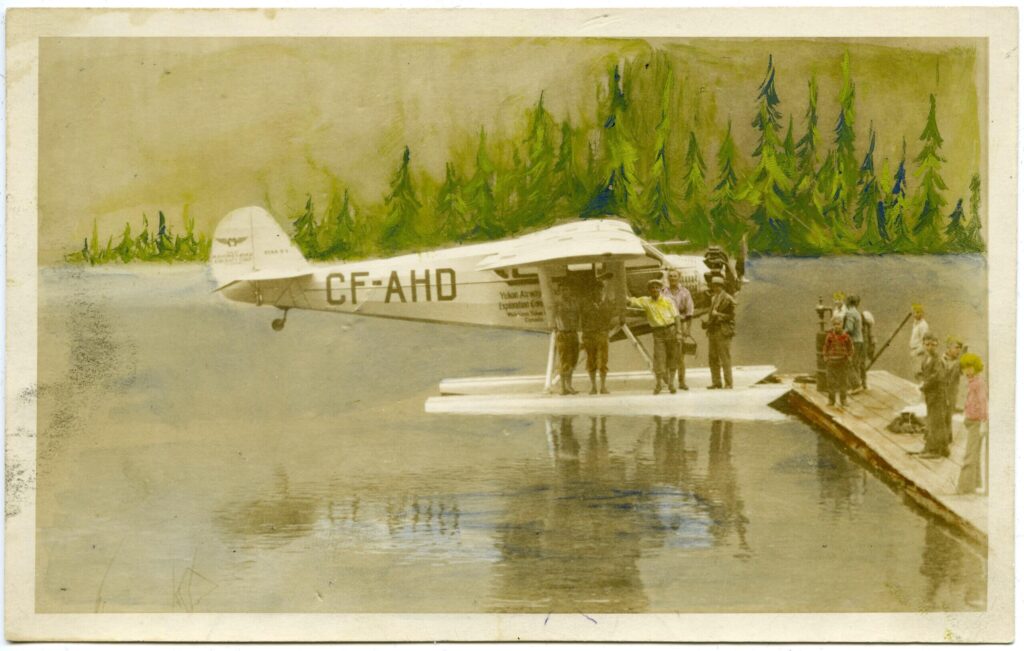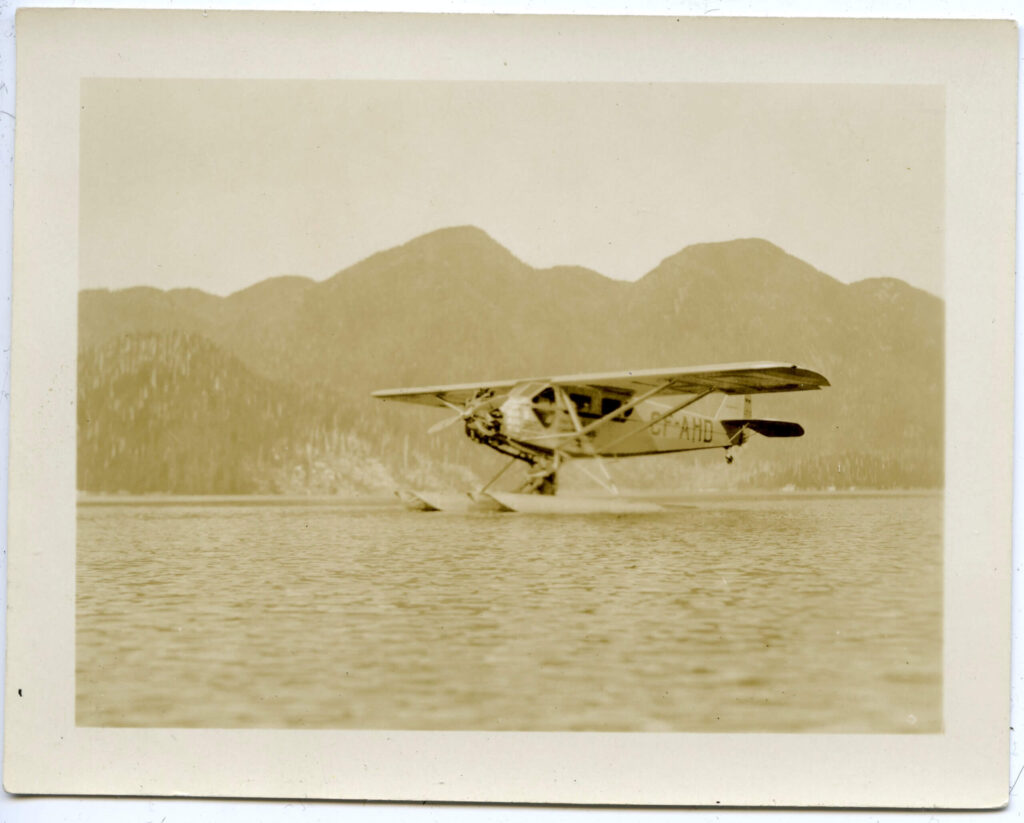The Queens of the Yukon, Queen of the Yukon, Queen of the Yukon II: Ryan Brougham Monoplane
Crew: One Pilot
Capacity: 4 passengers or 363 kg of mail
Length: 8.46m (27 ft 9 in)
Wingspan: 12.8m (42 ft)
Height: 2.67m (8 ft 9 in)
Wing Area: 25.1 sq m (270 ft sq)
Weight: 848 kg (1,870 lbs)
Loaded: 1,497 kg (3,300 lbs)
Useful Load: 363 kg (800 lbs)
Powerplant: Wright Whirlwind J-5 engine.
Maximum Speed: 201 kmh (125 mph)
Range: 1,127 km (700 mi)
Service ceiling: 4,900 m (16,000 ft)
Yukon Companies: Yukon Airways and Exploration Company
Yukon Pilots: Queen of the Yukon: Tommy Stephens, Andy Cruickshank, Clyde Wann. Queen of the Yukon II: Pat Patterson, Gordan Stewart, Clyde Wann,

1927 would see the first registered airplane in the Yukon Territory, well, sort of. The Queen of the Yukon operated by Yukon Airways was the first airplane registered in the territory, however, because air travel was just in its infancy there was no actual registration for aircraft in the Yukon. That meant that Andy Cruickshank and Clyde Wann´s shiny new mail carrier was actually registered as an imported steamship!
The Queens of the Yukon, both one and two were a Ryan Brougham Mono-plane and is the same type used by Charles Lindbergh. Although, Lindbergh´s Ryan was heavily modified to complete the famous Trans-Atlantic journey. Choosing extra fuel tanks over seats or mail.
The Queen of the Yukon being the first commercial airplane in the territory made many historic flights. It was the first to deliver mail by air to Dawson City; a task it performed by dropping the mail from the sky as it was determined that the river ice was not significantly thick enough to land on. It was hoped that the Queen of the Yukon would serve a lengthy and profitable career. Yet, starting a brand new company in the late Yukon fall proved not to be the greatest of undertakings. The harsh winter temperatures would cause two engine failures by December of 1927. The Queen would remain grounded for the duration of the winter.
In May of 1928, barely one month after returning to service the Queen was involved in an accident on landing. A strong crosswind pushed the fledgling aircraft into the Model T truck of Billy Pucket, the agent for Yukon Airways. The Ryan aircraft was deemed a write-off. The Queen of the Yukon had not even served a year and was already needing to be replaced.
After a 14 month wait from the Ryan factory, a replacement for Queen of the Yukon was acquired. A new Ryan was flown to Whitehorse on September 26, 1929, named Queen of the Yukon II. The Queen of the Yukon II, like its predecessor, had undergone a barnstorming campaign trying to raise some extra cash on route to the Yukon. Tragically like its predecessor, the second Queen was not to reign for long. After only five weeks of being in the Yukon, Queen of the Yukon II was no more. Taking off from Mayo on the frozen Stewart River, the Queen of the Yukon II suffered an engine failure. Pat Patterson, at the controls, had a choice: glide into the buildings ahead of him, or turn back and try and land on the frozen ice of the river. Patterson chose the latter. As he banked back to the river behind him, the planes nose and wing dipped, and plunged the Queen of the Yukon II and her pilot into the river ice.
Pat Patterson was killed instantly, and the Queen of the Yukon II was beyond repair. The dynasty that was Yukon Airways and its queens was over. A third Queen was planned but another accident involving Yukon Airways´ other plane was too much to bare and the company folded. Despite serving an incredibly short life in the Yukon, the Queens of the Yukon proved the viability, at least in concept, of commercial air travel in the Yukon.




